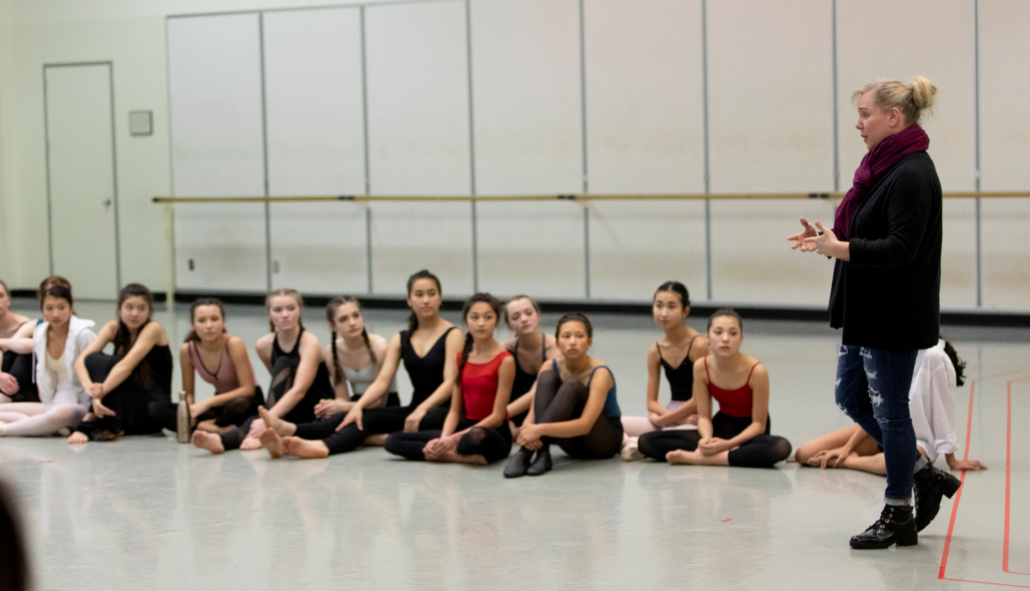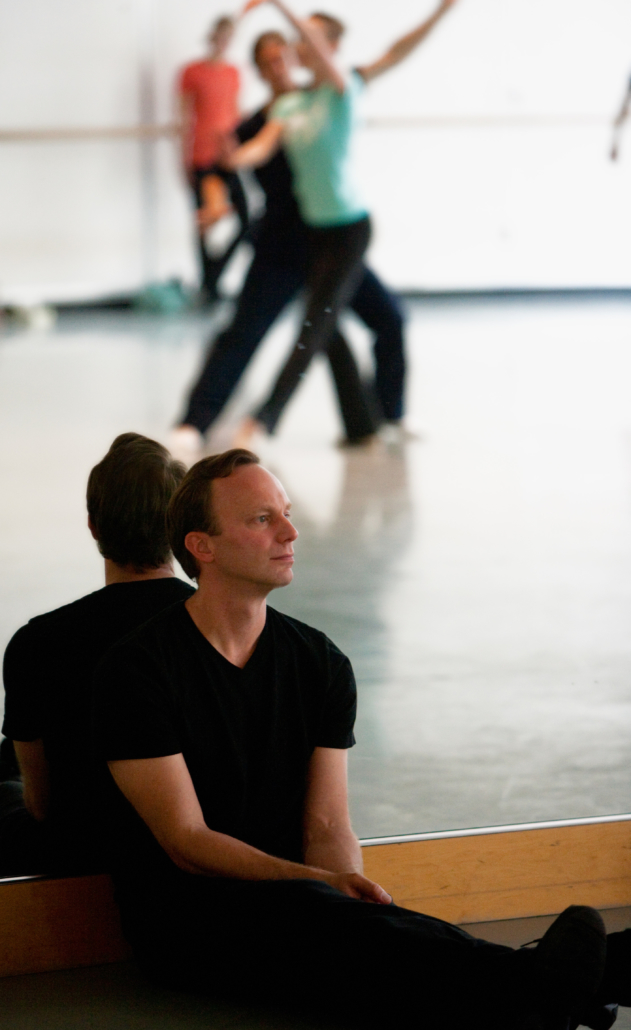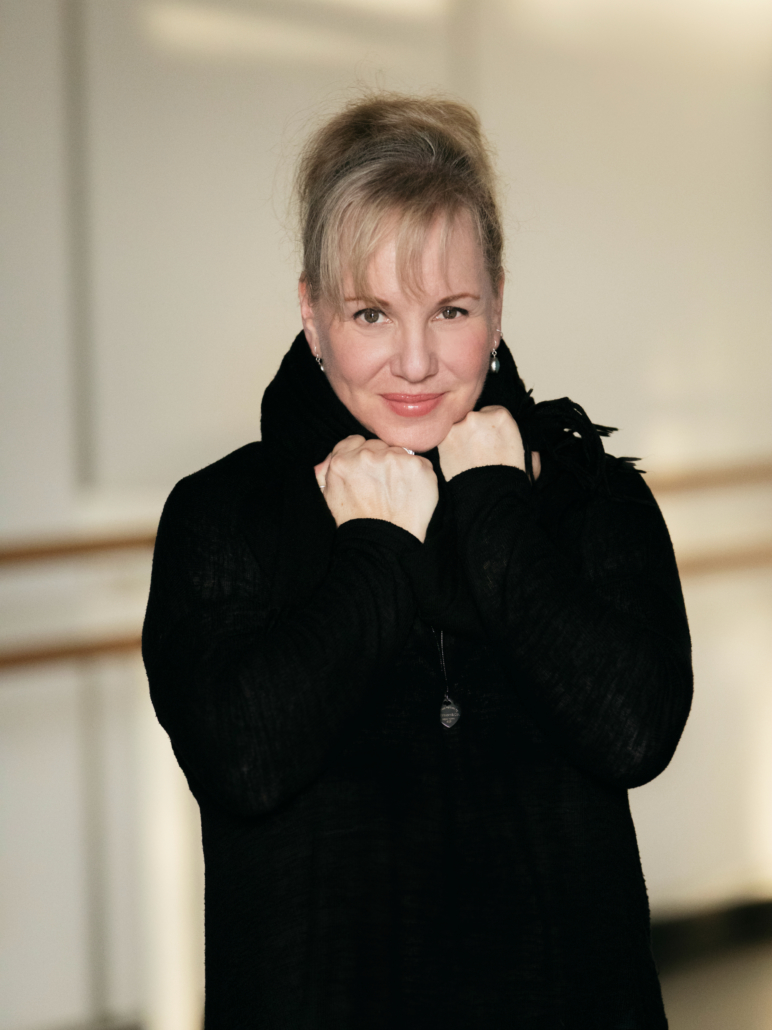DDP Talks To
"The Devil Ties My Tongue" by Amy Seiwert performed for the SKETCH Series, 2013. Photo by David DeSilva. Courtesy of Amy Seiwert's Imagery
April 30th: South Arts: Professional Development & Artistic Planning Grants, April 30th: South Arts: Express Grants, May 6th: Doris Duke Foundation Grant, May 7th: South Arts Individual Artist Career Opportunity Grant, May 27th: Dancemakers Residency, June 1st: Miami DanceMakers
×
"The Devil Ties My Tongue" by Amy Seiwert performed for the SKETCH Series, 2013. Photo by David DeSilva. Courtesy of Amy Seiwert's Imagery
What will it take to change the culture? We don’t accept that ballet needs to stay as it is or that it should be frozen in time. In this section, DDP explores new initiatives, smart and more evolved programming or ventures within an independent of companies that will transform classical dance into a better, more popular art form – an art form that speaks to new and expanded audiences
3 March 2021
By Gia Kourlas
With performances on pause, many dancers are rethinking their relationship to weight.
Lovette also understands that she can help make ballet better. In the past few years, she has started making a name for herself as a choreographer. That puts her in a rare position to affect change.
“This is so why I wanted to be a choreographer,” she said. “The choreographer has even more power than anybody else because we get to choose who’s in the ballet. Most places I go, I can take anyone in the company. Maybe they’ll nudge and say: ‘Oh, no, no, no, you shouldn’t choose her. You should choose her. She’s better.’ But I can go, ‘No. I want her.’ Every time! And it’s so empowering.”
Read the full article here.
By Emily Dixon
10 February 2021
Shortly after Adriana Pierce joined Miami City Ballet, someone watched her train and made an assessment: “Is Adriana a lesbian? Because she looks like one.” The comment propelled Pierce into exacting self-scrutiny: “I was like, does my dancing look gay? Do I look different? I am different – is that OK?”
Pierce, who left the company after seven seasons to focus on choreography and musical theatre, has rarely felt represented as a queer woman in the ballet world but with her new movement, #QueertheBallet, she hopes to inspire change. Her first project is a pas de deux en pointe choreographed on the American Ballet Theatre dancers Remy Young and Sierra Armstrong, which she is developing during a dance residency at the Bridge Street theatre in Catskill, New York. “I want to show people an authentic, complex relationship between two women through ballet,” Pierce explains. “I want people to see that ballet can be more than a man lifting a woman in a tutu.”
Although queer men are also largely cast in heteronormative partnerships, while facing well-documented homophobic stigma, the crucial difference for Pierce is visibility. “Queer women aren’t even on the radar in our spaces. I sometimes do experience overt homophobia, but the worst of it is the micro-aggression. I’m just never considered,” she says. “The idea that a woman might deviate from the image we expect as a professional ballet dancer is just not even a thought people have.”
Read the full article here.
By Zoe Phillips
09 February 2021
Last week, Memoirs of Blacks in Ballet celebrated the start of Black History Month with the launch of The Constellation Project, a star-studded online exhibition of dance history. The project maps the lives of six influential Black dancers—Arthur Mitchell, Mel Tomlinson, Lavinia Williams, Mabel Jones Freeman, Doris Jones and Claire Haywood—across a digitally rendered galaxy of historical events, institutions and more. The result is an educational experience that, much like its galaxy-inspired title, will no doubt only continue to grow.
Writer and activist Theresa Ruth Howard founded MoBBallet in 2015 with a fairly simple mission: to make the invisible visible. She started with projects like her Roll Call of Black dancers and the Timeline that traces their presence back into the 19th century. These designs highlighted Black artists as individuals, but the more that Howard learned, the more complex these stories became.
“We don’t dance in a vacuum,” Howard explained recently, “and history is not as siloed as it’s presented when we teach it.”
Read the entire article here.
30 October 2020
English National Ballet first soloist James Streeter has practically grown up with the company. Since completing his training at the English National Ballet School, he went on to join the main company in 2004, rising up the ranks to first soloist in 2018. He’s danced his favorite roles, including Tybalt in Romeo & Juliet and Albrecht in Akram Khan’s Giselle. He even met his wife while dancing with the company, ENB lead principal Erina Takahashi. What’s left to do when you’ve accomplished so much as an artist? For Streeter, it meant learning more about the business side of the company. In November 2019, Streeter was named the first mentee of ENB’s Dance Leaders of the Future mentorship program. The program offers ENB’s dancers the opportunity to develop leadership skills and gain a greater understanding of the running of an arts organization.
Streeter says he wants to give back to the art form. “I’ve always been interested in how the company works as a whole,” he explains during a phone call from London. “I have a desire to enable this art form to continue and be able to do something bigger than what I can as an artist.”
The inspiration for the program came from a need to help more dancers prepare for the next step in their careers.
“One of the aspects that I felt was lacking in the industry was towards leadership,” says ENB artistic director Tamara Rojo. “Dancers rarely get the opportunity to experience all the other aspects that are necessary for a show to go on, like marketing, fundraising and finance. We wanted to offer those in the company who have leadership aspirations to shadow myself, be present at board discussions, converse with different departments, and then eventually produce something.”
Prior to taking the helm of ENB, Rojo shadowed National Ballet of Canada artistic director Karen Kain through a program called Rural Retreats, organized by UK organization Dance East. The program brings together international dance leaders to discuss and prepare for the future of the industry. It was an enlightening experience for Rojo, which she hopes to pass on through ENB’s mentorship program.
Artistic director and lead principal Tamara Rojo with Streeter in Akram Khan’s Giselle
Laurent Liotardo, Courtesy ENB
“What was a revelation for me was seeing all the other areas of a ballet organization and how intrinsically linked they are,” she says. “I learned that a good artistic vision will inspire the marketing department; will allow the development department to fundraise successfully; will allow a finance department to make the sums add up. A healthy ecosystem between all the different departments is what makes a strong organization.”
For Streeter, preparing for a leadership role began as soon as he applied for the program. All applicants had to submit a curriculum vitae and undergo a panel interview.
“They were really giving us insight into what to expect for the future,” Streeter.
Once he was selected, he was immediately immersed in the various facets of ENB’s business. In addition to working with Rojo, Streeter also shadowed executive director Patrick Harrison and chief operating officer Grace Chan.
“One of my first meetings was with some of the trustees who were reviewing the company’s finances,” says Streeter. “One of my big questions has been ‘How can we maintain our artistic value while still meeting our financial needs in order to sustain as a company? How do we decide on repertoire that strikes that balance?’ Being in that meeting was eye-opening in understanding how to persuade someone who may not necessarily understand the artistic value of something but can understand the financial value. They are two different things but need to be understood equally. Grace Chan, our COO, is absolutely incredible at doing that.”
Read the full article here.
For DDP’s first post in the Initiatives Worth Following series, DDP Founder and President Liza Yntema had the pleasure of interviewing the team behind Pacific Northwest Ballet School’s New Voices: Choreography and Process for Young Women in Dance choreographic course, Pacific Northwest Ballet Artistic Director Peter Boal and Pacific Northwest Ballet School faculty member Eva L. Stone. Watch the video below for an introduction to this groundbreaking course before you read on! Visit the company’s website to learn more about Pacific Northwest Ballet.
Liza Yntema (LY): What inspired you to create the New Voices program?
Peter Boal (PNB Artistic Director, and Director of the PNB School): Eva Stone was the first to identify the need for a program like this, but from where I sit, I was seeing choreographers receive their first opportunities to create as young members of the company (between the ages of 20 and 28). So much of our sensibilities as creators has been shaped by this age.
We are well-schooled in what not to do, and some of the risk-taking and experimentation we might have harnessed at a younger age is already lost. We also may have missed opportunities to analyze and appreciate works we dance in and live in, because we are so focused on steps, balances and counts. To see our profession through a choreographer’s lens from the start is to open a whole new set of eyes and flex another creative muscle.
Eva Stone (PNB School faculty member): Since the course’s inception (for PNB’s 2017 Summer Course), approximately 300 students have participated (including students during our current five-week Summer Course.) For its inaugural run during the 38-week 2018/2019 academic school year, 19 young women were in the class.
LY: Eva, you have a decades-long background in dance pedagogy and choreographic theory. Can you tell us a bit more?
ES: I entered this journey in reverse; mastering choreography before technique. This allowed me to invent a self-generated movement language, one that continued to evolve as my dance training intensified. I had to create “survival tactics” in order to navigate an art form that often made demands that I could not meet. I share these tactics with my students, through the medium of dance technique, imagery, choreographic practice, mentorship, and coaching.

LY: What is the impetus and what are you trying to accomplish?
PB: First and foremost, I want these students to find their voices as artists and creators. I know many may not choreograph later in life and they may not dance either, but the skills they will take away — expression, collaboration, communication, time management and more — will apply to everything in their futures.
I also like the idea of a deeper understanding of the working relationship in ballet studios. Taking on different roles builds respect, empowerment and understanding. I’m not opposed to finding the next generation of great choreographers for PNB and the stages of the world, either.
LY: Why this particular age group or cohort?
PB: The Level VII women (ages 14 – 16) are some of our most devoted students and quite proficient in dance and movement vocabulary. Same is true of our VIIIs, but they are also considering colleges and other paths and their attention is pulled in new directions during much of the year. Level VIIs are “all in.”
LY: What was your takeaway from the girls?
ES: I noticed two significant changes (among many) of note. First, their ability to look at work other than their own with a deeper understanding of how dance is deconstructed and examined: They became more insightful and articulate about work they viewed. And second, all of the girls demonstrated a significant increase in their confidence as students, dancers and dance-makers.
LY: As noted in my dual presentation(s) in Cleveland [see note at end of article], what excites me most about New Voices is that it is geared towards the age group when girls start to lag behind boys in speaking up in class and excelling in math and science. Their confidence fades away. Was this a factor you had to tackle during the program?
ES: Only for the first or second week, and then things began to quickly shift. My opinion is that the all-female environment gave these young women equal opportunity to create, participate, and experiment without distraction or perceived judgement (as is often inherent with young teens in a mixed gender environment.) I also gave the students permission to create without concern for the outcome and asked that they make work that was significant to who they are as artists and creators. They are encouraged to understand that their creative opinion matters.
LY: What were the biggest successes of the first scholastic year of the program?
ES: The two presentations (solo work in January and group work in May) demonstrated their outstanding work and individuality as dance-makers.
What would you change for next year?
ES: Next year will see the course shift to two levels; repeat students that have had the course before, and those that are new.

Peter Boal serves as Artistic Director of Pacific Northwest Ballet and Pacific Northwest Ballet School. Mr. Boal assumed the directorship of Pacific Northwest Ballet in 2005 following a successful career with New York City Ballet as a principal dancer, and as a faculty member at The School of American Ballet. He received his dance training from SAB under the directorship of George Balanchine. His performance career spanned 22 years with New York City Ballet and he was a frequent guest artist with national and international companies. In 2002 he founded Peter Boal and Company, a critically acclaimed chamber ensemble. Mr. Boal joined the faculty of The School of American Ballet in 1997, teaching technique, variations, men’s and women’s classes and partnering. He has been a guest teacher at Central Pennsylvania Youth Ballet and Royal Danish Ballet School, among others.

Eva L. Stone is a teaching artist, choreographer, and founder/producer of CHOP SHOP: Bodies of Work, an annual contemporary dance festival. She received her BFA in Performance & Choreography from Arizona State University, and later earned an MA in Choreography & Choreological Studies from Trinity Laban in the UK. She’s created work for Spectrum Dance Theater, Pacific Northwest Ballet/Seattle Art Museum’s Sculptured Dance, Seattle International Dance Festival, Bellingham Repertory Dance, and collaboratively with Seattle Dance Project for Project Orpheus, among others. Her work has been presented in New York, Los Angeles, London, Geneva, Montreal, and St. Petersburg. Most recently, Ms. Stone’s newest work will be among three world premieres by Seattle-based choreographers (Stone, Donald Byrd, and Miles Pertl) presented by Pacific Northwest Ballet in LOCALLY SOURCED, November 8 – 17, 2019.

Liza Yntema, Founder of Dance Data Project®, was invited to speak to Artistic and Executive Directors of mid-sized ballet companies at the Dance/USA Conference in Cleveland, Ohio in June of 2019. Yntema’s speech discussed her 2019 Listening Tour to companies leading the way to equity (the leaders of many of these companies were in attendance), the mission of DDP, and how companies of this size can best serve equity while becoming more financially successful. Specifically, Yntema recommended companies explore choreographic initiatives for girls/young women.
*Liza Yntema is a personal contributor to the New Voices initiative at Pacific Northwest Ballet, as she is The Women’s Movement at American Ballet Theatre and ChoreograpHER at Boston Ballet.
Learn more about the Pacific Northwest Ballet School here.
Read the press release for New Voices here.
Reach out to us to learn more about our mission.
"The Devil Ties My Tongue" by Amy Seiwert performed for the SKETCH Series, 2013. Photo by David DeSilva. Courtesy of Amy Seiwert's Imagery
